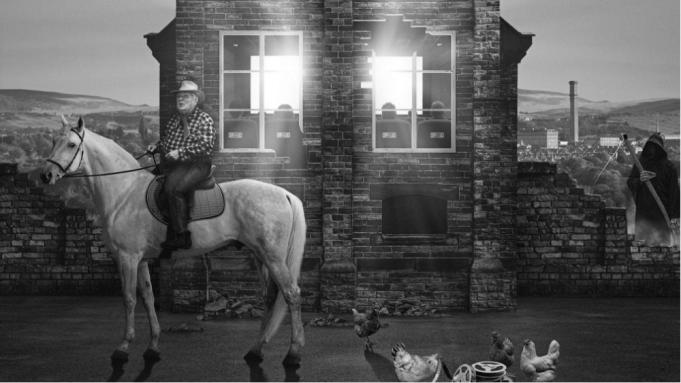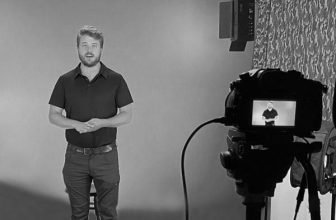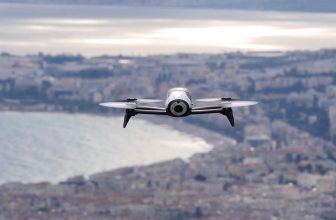
The technique of capturing moving pictures and still photographs using light and electromagnetic radiation is referred to as UAV cinematography.
This may be accomplished via the use of an image sensor or by the use of light-sensitive materials like film stock.
The light that is reflected into certain genuine photographs is focused using a lens that is more or less standard.
The origins of cinema may be traced all the way back to the 1830s when moving pictures were first captured on rotating drums and disks. Later on, filmmaking evolved into a more sophisticated and contemporary form, eventually becoming what is known as current UAV-Cinematography.
Film Cinematography
In days gone by, the very first movie ever made was an experiment by Louis Le Prince called Roundhay Garden Scene, which he shot in 1888.
Later, in 1896, Edison was successful in releasing the vitascope projector, which brought a new level of innovation to the field of cinematography. It was the first projector to achieve commercial success in the United States.
Even after so much time has passed, the world has finally caught a peek at digital cinematography. At this stage, the video was shown via digital media while utilizing the most recent UAV technology. Sony has just begun to distribute HDCAM recorders, which are capable of capturing the most breathtaking photographs.
These were professional digital cameras with a resolution of 1920 by 1080 pixels. The concept was eventually given the moniker “Digital Cinematography.”
Aspects of Modern UAV-Cinematography
Unmanned aerial vehicles (UAVs) are used in conjunction with cutting-edge technology in today’s UAV cinematography. that provide high-quality still photographs and moving pictures of the activity.
One example of a high-tech item that is becoming more accessible to amateur and professional photographers is the DJI Inspire One, which is an unmanned aerial vehicle (AUV) model. It guarantees that it will provide consumers who are interested in aerial films and photo solutions.
The camera is capable of recording in DCI “Full” 4K (4096 x 2160) at 24 and 25 frames per second, in addition to Ultra HD 4K (3840 x 2160) at 24, 25, and 30 frames per second. The camera has a resolution of 12 megapixels and can capture video in 1080p or 720p at a frame rate of up to 60 frames per second.
The cost is quite low (less than $3,000), making it one of the most cutting-edge pieces of technology. It’s all about the DJI Inspire One. It has a design that allows the landing gear to retract inside the vehicle. The most significant benefit of using such technology is that it offers a panoramic view of the picture that is free from obstruction and can be seen in 360 degrees.
In addition to that, it has a connection operating at 5.8 GHz, which enables wireless transmission too far locations. Inspire 1 DJI is included in the Phantom, Phantom 2, and Phantom 2 Vision Models; these models all claim to be able to take video and still images from an aerial perspective. These characteristics contribute to the value of UAV-Cinematography and boost its potential applications.
Types of Camera platforms
With the rapid advancements being made in the digital sphere, as well as the innovative design advances occurring in the area of camera drones and hobbyist unmanned aerial vehicles (UAVs), We now find camera platforms that are capable of capturing images and live feed from a variety of angles and postures, such as aerial shot, arch shot, sequence shot, tracking shot, and crane shot, all with the freedom of the three-dimensional space, and remotely controlled UAV flight.
Some of these shots include aerial shots, arch shots, sequence shots, tracking shots, and crane shot. Aerial photographs are those that have been captured with the assistance of flying machines such as a helicopter, quad-copter, or drone. In the field of aerial photography, unique equipment is used in order to take photographs.
Lightbridge is a technique that is capable of both compressing a high-definition (HD) stream and transmitting it to a remote place. It seems to be an Inspire One, which provides a “Ready-to-Fly” package of accessories. The upkeep of the battery was made much easier thanks to this feature’s implementation.
The primary objective of the arch cameras is to take photographs using a camera that moves continuously around the photographic location. The crane shot is one that is taken with the assistance of a crane that is positioned some distance away from the subject of the image.
The act of photographing a somewhat lengthy and comprehensive scene in a single take without using any further editing techniques is known as a sequence shot. These cutting-edge cameras are used to take the most gorgeous photos possible, both in terms of sound quality and technological advancement.
Inspire One UAV-Cinematography platform
Any aspiring filmmaker would benefit greatly from making use of the 4K wide full-screen video capability of the Inspire One camera. Bringing the possibility of full wide-screen viewing to anyone who is interested in filmmaking but doesn’t have a professional camera.
It’s one thing to pilot an unmanned aerial vehicle (UAV), and it’s another thing totally to take photos with it, but it’s another entirely more in the domain of science and art to take photos that show visually intriguing sequences of flight. There are certain angles that are best in geometry; slicing a diamond is not a game of chance; neither is slicing wood blocks or slicing a cake with several layers.
It is necessary to have a goal in order to accomplish both the premise and the culmination of the narrative, and this process of thinking through the alternatives might take a significant amount of time. UAV-Cinematography is an intriguing possibility since it offers an unrestricted opportunity for creative expression as well as the flexibility that comes with operating in the real, three-dimensional realm of flight.
Do take into consideration the DJI Inspire One platform if you have a budget that comfortably allows for it ($3,000), regardless of whether you are interested in UAV cinematography, perhaps see your role in commercial prospects, or whether you are interested in personal satisfaction and family creativity.






